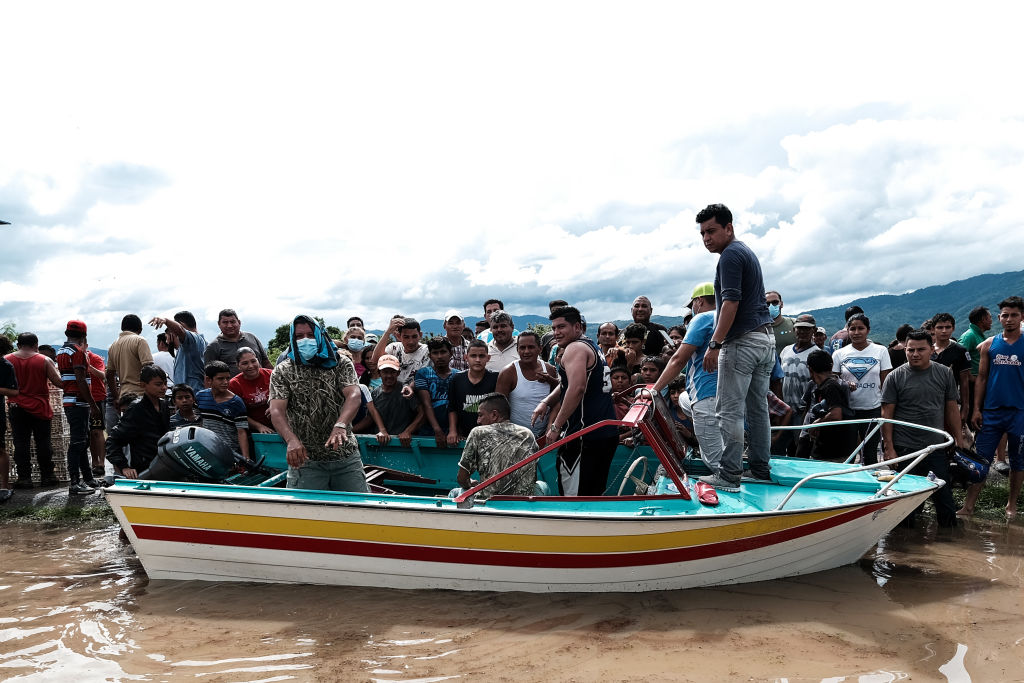This article was originally published in November 2020, right after Hurricane Eta devastated parts of Central America.
It is hard to imagine a worse scenario than what is happening in Guatemala, Honduras, and El Salvador, the countries that have been the source of much of the irregular migration to the United States over the past six years. Hurricane Eta has left untold destruction in its wake and is now being followed by an even stronger hurricane Iota, hitting the region’s most vulnerable populations particularly hard with mudslides, flooding, and power outages. This amidst the dire economic and health effects of the pandemic.
To put it bluntly, heading north will continue to be seen as an option. President-elect Joe Biden has promised to do things differently, treating migrants and asylum-seekers with dignity. But there are very real risks that sudden changes in policy could generate a surge of unauthorized migration: Recent experience has taught us that changing U.S. policies sends powerful signals to would-be migrants—and to their smugglers.
“Migrants will continue leaving Honduras because of the lack of work and the widespread violence,” Sister Nyzelle Dondé, the Honduran Catholic Church’s national coordinator of human mobility, told me recently. “The 600,000 people who have lost their jobs due to the pandemic are the next candidates to migrate.”
The Trump administration dealt with a large flow of migrants in 2018 and 2019 by sharply reducing access to asylum requests at the border, signing an agreement with Mexico to make would-be migrants wait in that country, and inking agreements with three other countries to send asylum seekers there to have their cases heard outside the U.S. Since March, the administration has also used a Centers for Disease Control (CDC) order to expel those caught at the border back to Mexico through an expedited process that usually takes less than two hours. These measures have succeeded in discouraging migration, but at a huge cost to the well-being of migrants and to the integrity of the U.S. immigration system.
It is likely that the new U.S. administration will have to maintain the CDC order for summary expulsions, at least for a few weeks or months, while also relying on the Mexican and Central American governments to limit the movement of caravans through their territory – but they must immediately begin to construct a new regional architecture for managing migration. This starts with getting rid of some of the most egregious current programs that send people to wait for their hearings in Mexico or transfer them back to Central America to process asylum claims, but it also involves building new elements of regional cooperation.
First and foremost, this new architecture needs to include some sort of labor pathway for Central Americans to do seasonal work in the United States. Last fiscal year, over 260,000 Mexicans participated in U.S. seasonal work programs (H-2A and H-2B), yet there were fewer than 10,000 Central Americans in these programs. There is no clear way to extend these programs to Central America since they are employer-led and not government-led, but any effort to do this starts with creating transparent procedures and clear talent pools to recruit workers from these countries, as well as other incentives for employers to look further south.
Secondly, a new administration will have to work with regional partners, from Canada to Costa Rica, to create new forms of humanitarian protection that allow those fleeing violence and persecution to get protection closer to home. This includes identifying those in danger in their home countries either for protection in-country or for resettlement as refugees in the United States and other countries, efforts that are done on a small scale already but could be vastly expanded with the right attention and resources. The U.S. government could also do more to support Mexico’s asylum system and resettlement efforts further, since that country received over 70,000 asylum applications last year. And, of course, a new U.S. administration needs to turn the asylum system at the U.S. border on again, but in a way that delivers resolutions that are both more fair and more timely, likely by letting asylum officers make the final decision on asylum applications. These changes will take a few months to put in place.
Third, a new regional approach requires robust but humane enforcement of existing migration laws among the countries of the region, with a willingness to bring enforcement in line with international standards. This means less use of detention in the United States, in favor of case management, for those awaiting asylum hearings, something that becomes more manageable with a timely decision-making process around asylum. And it probably means abandoning plans for an expensive border wall in favor of more agile kinds of technological barriers. In Mexico and Central America, it means significant investments to upgrade existing migration institutions. The U.S. should not be sending asylum seekers to other countries, but that does not mean that there will not be co-responsibility for enforcing existing laws that discourage irregular flows, especially if other channels for labor mobility and protection are available.
And finally, a new regional approach means making a concrete effort to invest in the future of Central American countries so that their citizens have fewer pressures to leave in the future. This will require a mixture of genuine partnership with Central American governments and major support for civil society groups that can hold governments accountable for building rule of law and creating sustainable development. There is no magical formula for improving conditions in Central America, but the target has to be on long-term efforts that can also create some hope in the short-term.
Migrants from Central America can also play a central role in these efforts. Return migrants bring human capital and skills that can be better employed in their home countries so as to generate local development. And governments can partner with financial institutions to help migrants turn their remittances into productive investments by providing credit to those who want to start and expand local businesses.
At a time of economic crisis, Central American countries have enormous opportunities to change their economic models towards a more inclusive pattern of growth. And external partners, including a new U.S. administration, can play a critical role in this process, so that the on-and-off cycle of irregular migration eventually becomes a thing of the past. And in the meantime, a Biden administration can transition towards a new migration management architecture that creates opportunities for seasonal work and humanitarian protection, while investing in a better future for the region as a whole.
_
Selee is the president of the Migration Policy Institute






